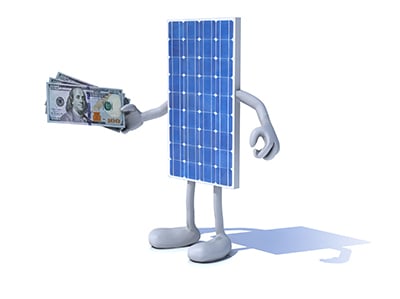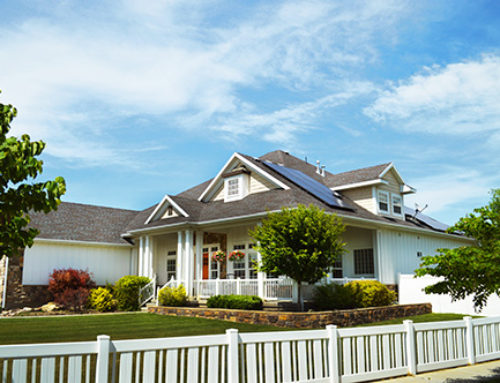There has been a consistent rise in power costs over the years. Research suggests that there will be a 3.6 percent increase in the US in 2019. This upward trend is likely to continue well into the future as the price of natural gases also continues to rise.

Rather than waiting to be a victim of the high and ever-rising energy cost of power, you can reduce your reliance on the grid by installing a solar power system in your home.
With new innovations aided by advancements in technology, the cost of installing solar panels has drastically gone down over the years. These days, even if you still can’t afford to pay for a system, there are companies that offer third-party financing that allows people to enjoy solar power without owning a solar kit. In this article, we shall discuss the different ways you can access solar power systems to help you reduce your monthly energy bill.
Solar Power System Financing

To encourage more people to use farm solar panels, solar energy companies and financial institutions now offer people the option of taking up a loan lease agreement in order to get financing for solar kits. Taking up a solar loan is a good option if you cannot afford to purchase a system. The solar loan lease agreement allows you to avoid steep upfront charges and save on power costs as you slowly pay for your system.
Provided you have a good credit rating solar loans have a short duration for approval. You will also get immediate ownership of the panels which will enable you to benefit from solar tax credits and rebates on top of the reduced energy costs. However, as the owner of the system, you will be responsible for maintenance and repairs.
Solar Lease Agreements
A solar roof lease agreement involves entering into a contract with solar energy installers for the provision of solar power equipment for little to no installation cost. In such arrangements, the leasing company retains ownership of the equipment.

They are also responsible for all system maintenance related costs. You are then required to pay a flat monthly fee for the duration of the lease which can span up to 25 years. Ideally, in this model, you are renting the equipment for the duration of the lease.
There are three types of solar roof lease agreements which are distinguished by the amount of money you have to pay for installation.
$0-down lease.
When taking up a $0-down lease, there are no upfront fees. The leasing company takes care of the installation costs leaving you to only worry about the monthly charge.
Pros
- You do not have to pay any down payment
- The rates are lower than utility electricity costs by up to 20-30%
Cons
- The monthly rate will increase annually albeit at a predetermined rate
Custom down-payment Solar Lease
In this solar roof lease agreement, you are required to pay a down-payment which is usually between $1,000 and $2,000. By doing so, you will enjoy reduced monthly charges. The good thing about paying a down-payment for a solar power lease is the ability to negotiate a fixed cost for the term of the contract.

Pros
- The monthly rate is lower than the $0-down option
- You can avoid the annual rise of monthly charges by negotiating for a fixed price for the whole duration
Cons
- You have to put in an initial investment before the system is installed
Prepaid Solar Lease
This model is very similar to buying your own solar power system. For this agreement, you pay the full amount upfront when signing the contract. You will however not incur any more charges for the duration of the contract.
Pros
- A fully repaid solar lease will increase the value of your property
- By paying full cost upfront, you will get discounts of between 30-50 %
- Your service provider is responsible for the maintenance of the leased solar panels
Cons
- Not everyone can afford to pay all the money upfront
The flat monthly charge you pay for a solar power lease is based on the energy output your Solar energy installers estimate you will benefit from on a monthly basis. It will not be based on the amount of electricity you use. If you prefer being billed on your actual power consumption you should consider a power purchase agreement (PPA.
What is a Power Purchase Agreement?
A power purchase agreement is a contractual arrangement between solar energy installers and a homeowner. The developer handles installation of the system and the homeowner pays for the power generated at a fixed price per kWh. The amount you pay per month may vary based on the actual power generated by the system and your consumption.
With a fully repaid solar lease, homeowners may choose to extend their PPA contract, buy the leased solar panels or even have the system uninstalled at the end of the contract period.
Advantages of PPAs to Consumers
- No or reduced initial costs: All the costs involved in assessing your premise and installing the solar energy system will be catered for by the developers. This means that transitioning to solar energy is relatively easy even with a tight budget.

- Reduced and controlled energy costs: With a PPA you get to enjoy cheaper electricity for the duration of your lease. Also, any rises in cost – usually 2-5%- are discussed during the contract negotiations. This protects you from any sudden rises in power costs. It is also possible to negotiate for a fixed price throughout the duration of the PPA term.
- Limited risk: The developer bears all the risk as you do not pay for installation and you are also not responsible for ensuring the system is performing at optimum levels.
- Increased property value: In case you put your house up for sale in the future, it will be worth more with a solar power system. Power purchase agreements can be easily transferred to new owners at little to no cost.
Go Solar Today
Solar energy is significantly cheaper than the electricity you get from your power company. Again, there are several options that enable you to purchase farm solar panels.
The good thing about leasing or seeking third-party financing is the fact that you do not need an initial investment – if you choose the $0-down option- to get the system installed.
